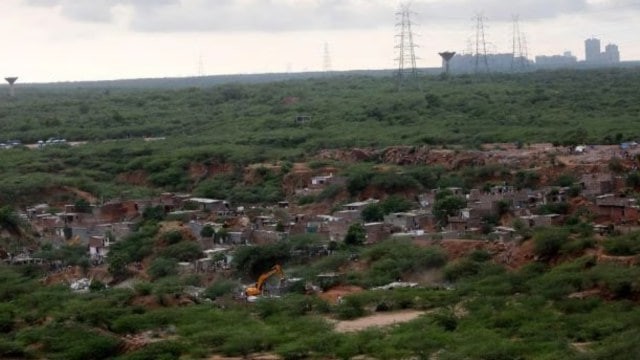Description

Source: Indian Express
Disclaimer: Copyright infringement not intended.
Context
- May 2024 was the warmest May on record, continuing a 12-month streak of record-breaking temperatures, with an average global temperature 1.5°C above the 1850-1900 pre-industrial average.
- The 2015 Paris Agreement aims to limit global temperature rise to well below 2°C, ideally capping it at 1.5°C above pre-industrial levels to prevent severe climate impacts.
- Reports from the Copernicus Climate Change Service (C3S) and the World Meteorological Organization (WMO) highlight the increasing likelihood of breaching the 1.5°C threshold in the near future due to persistent high greenhouse gas emissions and phenomena like El Niño.
Details
Key Points
- 5°C Threshold
- Defined in the 2015 Paris Agreement, aiming to limit global warming to 1.5°C above pre-industrial levels.
- Critical to prevent severe, long-term climate impacts.
- Causes and Effects
- Increased greenhouse gas emissions from fossil fuels.
- Severe heatwaves, oceanic warming, and coral bleaching as observed effects.
- Climate tipping points indicate irreversible changes in natural systems.
- Role of International Organizations
- Copernicus Climate Change Service (C3S): Monitors global temperature trends.
- World Meteorological Organization (WMO): Provides climate forecasts and warnings, publishes critical climate reports.
- NOAA: Tracks and reports on oceanic and atmospheric changes.
- Mitigation Strategies
- Immediate reduction of greenhouse gas emissions.
- Transition from fossil fuels to renewable energy sources.
- Implementation of sustainable development practices
About Copernicus Climate Change Service (C3S)
Monitoring:
- C3S provides detailed information on past, present, and future climate changes.
Data Source:
- Utilizes satellite data and ground-based observations.
Reports:
- Publishes regular reports on temperature anomalies and other climate indicators.
Tools:
- Offers tools for climate adaptation and mitigation planning.
Collaboration:
- Works with European and global partners for comprehensive climate monitoring.
About Cryosphere
Definition:
- The cryosphere includes all frozen water parts of the Earth system, such as glaciers, ice caps, and permafrost.
Importance:
- Plays a critical role in regulating the Earth's climate by reflecting sunlight.
Indicators:
- Melting of the cryosphere is a key indicator of global warming.
Impact:
- Affects sea levels and global weather patterns.
Monitoring:
- Monitored by organizations like NASA and the European Space Agency (ESA).

About World Meteorological Organization (WMO)
Establishment:
- Founded in 1950, a specialized agency of the United Nations.
Mission:
- Promotes international cooperation in meteorology, climatology, hydrology, and related fields.
Reports:
- Publishes annual State of the Global Climate reports and updates on extreme weather events.
Climate Forecasting:
- Provides climate predictions and warnings about climate-related risks.
Initiatives:
- Leads global initiatives on climate monitoring and disaster risk reduction, including the Global Framework for Climate Services (GFCS)
About El Niño
Definition:
- El Niño is a climate pattern characterized by the warming of surface waters in the central and eastern tropical Pacific Ocean.
Frequency:
- Occurs irregularly every 2 to 7 years, typically lasting 9 to 12 months.
Global Impact:
- Causes significant changes in weather patterns worldwide, including increased rainfall in the southern United States and Peru, and droughts in Australia and Indonesia.
Temperature Rise:
- Contributes to higher global surface temperatures, often resulting in record-breaking heat.
Economic and Environmental Effects:
- Can lead to severe economic impacts, particularly in agriculture and fisheries, and exacerbates environmental issues such as coral bleaching and forest fires.
About La Niña
Definition:
- La Niña is a climate pattern characterized by the cooling of surface waters in the central and eastern tropical Pacific Ocean, the opposite of El Niño.
Frequency:
- Typically follows El Niño, occurring every 2 to 7 years and lasting about 9 to 12 months.
Global Impact:
- Leads to changes in global weather patterns, including increased rainfall in Australia and Indonesia, and drier conditions in the southwestern United States.
Temperature Decrease:
- Generally contributes to lower global average temperatures, temporarily offsetting the warming trend.
Economic and Environmental Effects:
- Can cause significant impacts on agriculture, leading to crop yield variations, and affects weather-related natural disasters such as hurricanes and floods.
Sources:
Indian Express
|
PRACTICE QUESTION
Q. Critically examine the significance of the 1.5°C target set by the Paris Agreement in combating global climate change. Discuss the potential impacts if this target is breached.
|












